Montana’s vast wilderness and natural beauty make it the perfect destination for backpackers seeking adventure and exploration.
Whether you’re an experienced hiker or a beginner, Montana’s backcountry trails offer a unique opportunity to experience the untamed beauty of the Big Sky Country.
Contents
From challenging mountain routes to scenic lowland trails, backpacking in Montana offers something for everyone.
With over 3.4 million acres of designated wilderness areas, backpackers can immerse themselves in the rugged landscapes and discover some of the state’s hidden gems.
If you’re looking to embark on a backpacking journey in Montana, this article will provide you with all the information you need to plan your adventure.
From the best backpacking trails and backcountry camping options to gear recommendations and safety tips, we’ve got you covered.
Key Takeaways:
- Montana’s wilderness offers a unique experience for backpackers seeking adventure and exploration.
- Backpacking in Montana provides a wide variety of options for all levels of hikers and adventurers.
- This article will provide readers with information on Montana’s top backpacking trails, backcountry camping options, and gear recommendations.
- Safety considerations are essential when backpacking in Montana’s wilderness.
- Montana’s natural beauty and rugged landscapes make it a must-visit destination for backpackers and outdoor enthusiasts.
Exploring Montana’s Backcountry Trails
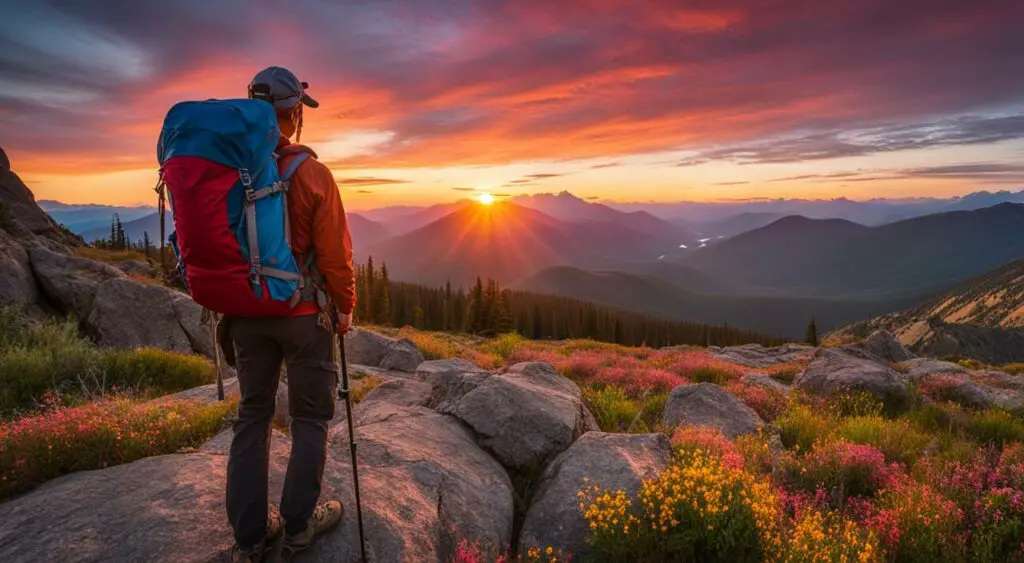
Montana is a backpacker’s paradise, offering a vast array of trails and outdoor opportunities for hikers of all levels of experience.
Whether you’re seeking a challenging multi-day backpacking trip or a leisurely day hike, Montana has something to offer.
Backpacking Trails
Montana boasts a diverse selection of backpacking trails, ranging from well-travelled routes to hidden gems waiting to be discovered.
Some of the most popular backpacking trails in Montana include the Beaten Path, the Chinese Wall, and the Bob Marshall Wilderness Complex.
The Beaten Path is a 26-mile trail that winds through the Absaroka-Beartooth Wilderness, offering picturesque views of alpine lakes and endless mountain vistas.
The Chinese Wall is a 12-mile trail that follows a towering limestone cliff, and the Bob Marshall Wilderness Complex offers over a million acres of rugged and pristine wilderness to explore.
For off-the-beaten-path options, backpackers can explore the scenic trails of the Gallatin Range, the Madison Range, and the Crazy Mountains.
These areas offer stunning alpine scenery, challenging terrain, and unique wildlife sightings.
Montana Backpacking Trips
Montana offers numerous backpacking trip options, ranging from guided tours to self-guided adventures.
Guided tours can provide an immersive and educational experience, with knowledgeable guides leading the way and sharing insights into the local flora, fauna, and geology.
Some popular backpacking trip providers in Montana include Wildland Trekking, Montana Alpine Guides, and REI Adventures. For those seeking a self-guided backpacking trip, Montana has plenty of options as well.
Some popular backpacking routes, such as the Beaten Path and the Chinese Wall, are well-marked and easy to navigate. Other routes, however, require more advanced navigational skills and wilderness experience.
Trails of Montana
Montana’s landscape is incredibly diverse, offering everything from towering peaks to rolling prairies. Backpacking trails in Montana
encompass this diverse terrain, showcasing the state’s natural beauty and unique ecology. The trails of Montana offer something for everyone, from family-friendly day hikes to multi-day backpacking trips.
Hikers can trek through alpine meadows, along rushing rivers, through dense forests, and across open high-country plateaus.
Montana Backpacking
Montana backpacking is an adventure of a lifetime, offering the chance to explore some of the most rugged and untamed wilderness areas in the United States.
From the towering peaks of Glacier National Park to the remote backcountry of the Absaroka-Beartooth Wilderness, Montana has something for backpackers of all skill levels.
Whether you’re a seasoned backpacker or a beginner, Montana’s backcountry trails offer a unique and rewarding outdoor experience.
With countless trails to choose from, hikers can tailor their trip to their level of experience and desired level of challenge.
Glacier National Park: A Backpacker’s Paradise
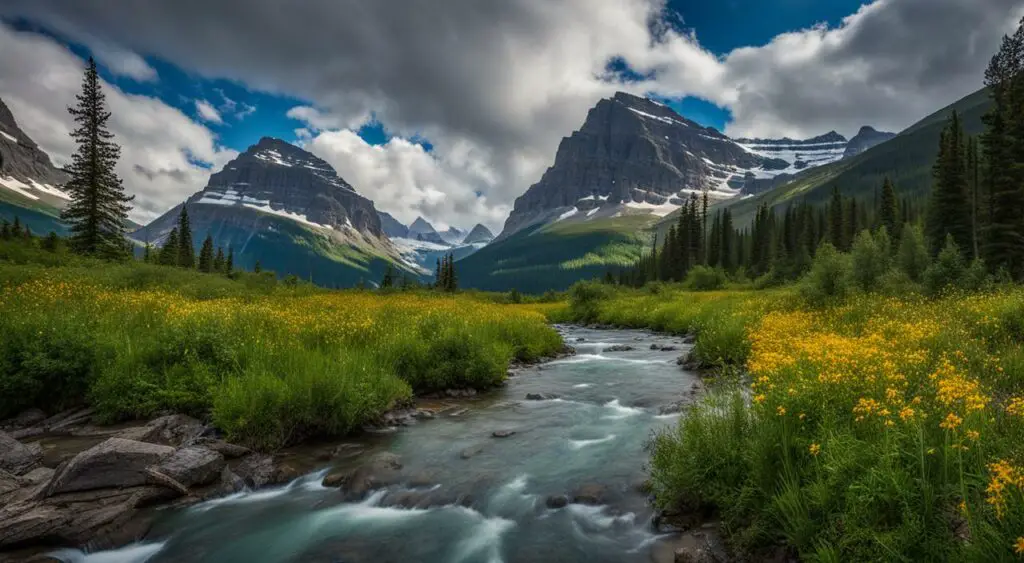
Glacier National Park, located in the northern region of Montana, is a backpacker’s paradise that offers a unique blend of challenging hikes, stunning landscapes, and abundant wildlife.
The park is home to over 700 miles of trails, ranging from easy strolls to multi-day backcountry treks.
Backpackers can expect to encounter rugged peaks, pristine alpine lakes, and expansive meadows teeming with wildflowers.
Glacier National Park is most famous for its glacier-carved terrain, and backpackers can explore the park’s namesake features on the eight major hiking trails that traverse the glaciers.
Each of these hikes offers breathtaking views of the park’s glacial lakes and valleys.
One of the most popular hikes in the park is the Highline Trail, which runs along the Continental Divide and offers sweeping views of the surrounding mountains.
The trail, which stretches for over 11 miles, is considered moderately difficult and takes approximately 6-8 hours to complete.
For experienced backpackers looking for a more challenging hike, the Grinnell Glacier Trail is a must-visit. The trail offers unparalleled views of the park’s largest glacier and takes hikers deep into the backcountry.
The 12-mile round trip trail is considered strenuous and requires good physical fitness and endurance. Backpackers who want to experience the park’s wilderness up close can opt for a backcountry camping trip.
The park offers over 60 backcountry campsites, accessible only by foot, and requiring a backcountry permit.
These campsites offer a unique opportunity to experience the park’s beauty and solitude, away from the crowds of the park’s main areas.
It is important to note that Glacier National Park’s weather can be unpredictable, with snow possible even in the summer months.
Backpackers should come prepared for all weather conditions, including rain, snow, and wind.
Overall, Glacier National Park offers a backpacking experience unlike any other, with stunning mountain vistas, challenging hikes, and opportunities for unforgettable wildlife encounters.
Absaroka Beartooth Wilderness: A Hidden Gem
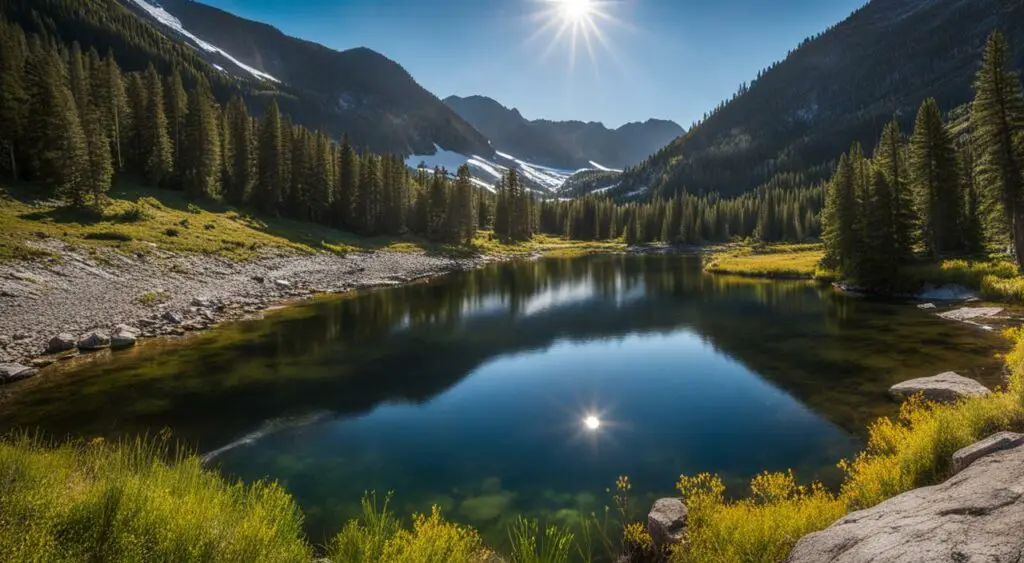
Absaroka Beartooth Wilderness, located in south-central Montana, consists of more than 944,000 acres of rugged mountain landscapes.
It is a hidden gem for backpackers looking for a challenging and adventurous experience in the wilderness.
The wilderness area boasts of more than 700 miles of trails, offering backpackers a wide range of options for exploring the wilderness.
The trails vary in difficulty and length, perfect for backpackers of all levels of experience. Some of the top backpacking trails in Absaroka Beartooth Wilderness include:
| Trail Name | Distance | Difficulty Level |
|---|---|---|
| Beaten Path Trail | 26 miles | Difficult |
| Lake Fork Trail | 15 miles | Moderate |
| Bench Trail | 8.4 miles | Moderate |
The trails take backpackers through some of the most spectacular landscapes, including mountains, valleys, and lakes. Backpackers can also spot a variety of wildlife, including bighorn sheep, grizzly bears, and elk.
Backpackers can choose to camp at one of the designated sites along the trail or set up camp at a backcountry spot of their choice.
It is important to note that camping is only allowed in designated areas, and backpackers should obtain a permit before camping overnight in the wilderness.
Absaroka Beartooth Wilderness offers backpackers a unique opportunity to explore a pristine wilderness area that is still relatively unknown.
For those looking for an unforgettable backpacking experience in Montana, Absaroka Beartooth Wilderness should be at the top of their list.
Crazy Mountains: A Hiker’s Paradise
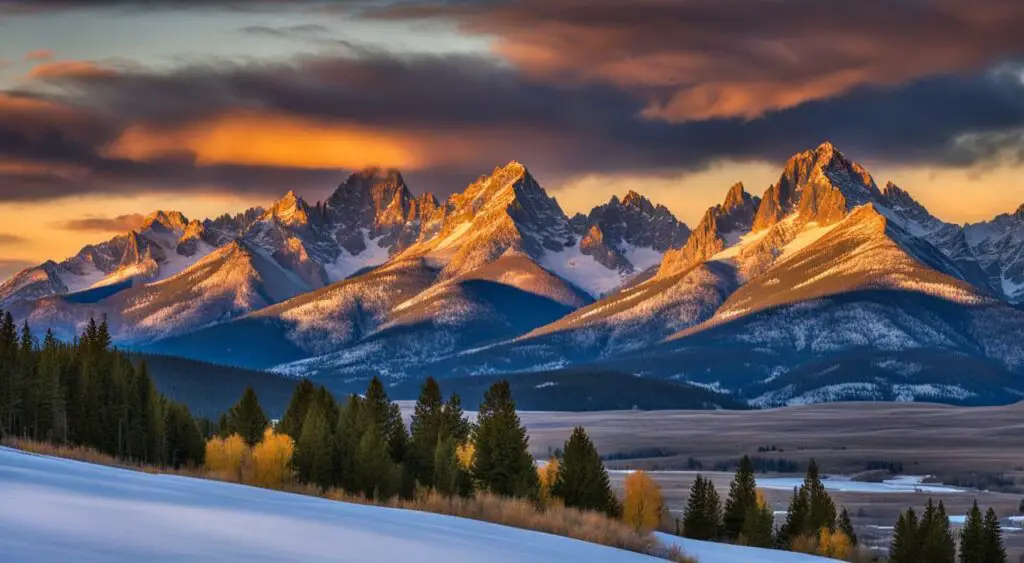
The Crazy Mountains are a hidden gem in Montana, offering stunning alpine scenery and challenging backpacking opportunities.
With peaks soaring up to 11,000 feet and rugged terrain, the Crazy Mountains are a dream destination for any hiker seeking a true adventure.
One of the best hikes in the Crazy Mountains is the Granite Peak trail, which takes hikers through some of the most beautiful and remote areas of the range.
This trail is not for the faint of heart, as it can be quite steep and rugged in spots. However, the payoff is worth it, with stunning views of the surrounding peaks and valleys.
Another popular hike in the Crazy Mountains is the Big Timber Creek trail, which offers more moderate terrain but still provides plenty of breathtaking scenery.
This trail takes hikers through forests, meadows, and streams, with views of snow-capped peaks in the distance.
The Crazy Mountains are a hiker’s paradise, offering some of the most beautiful and remote areas of Montana for explorers to discover.”
For those looking for a longer backpacking trip, the Crazy Mountains offer several multi-day hikes with opportunities for backcountry camping.
The West Fork Boulder River trail is one such hike, taking hikers through rugged landscapes and past crystal-clear mountain lakes.
No matter which trail you choose, be sure to bring plenty of water and be prepared for changing weather conditions.
The Crazy Mountains are a true wilderness area, and visitors should be prepared for the unexpected.
Planning Your Montana Backpacking Trip
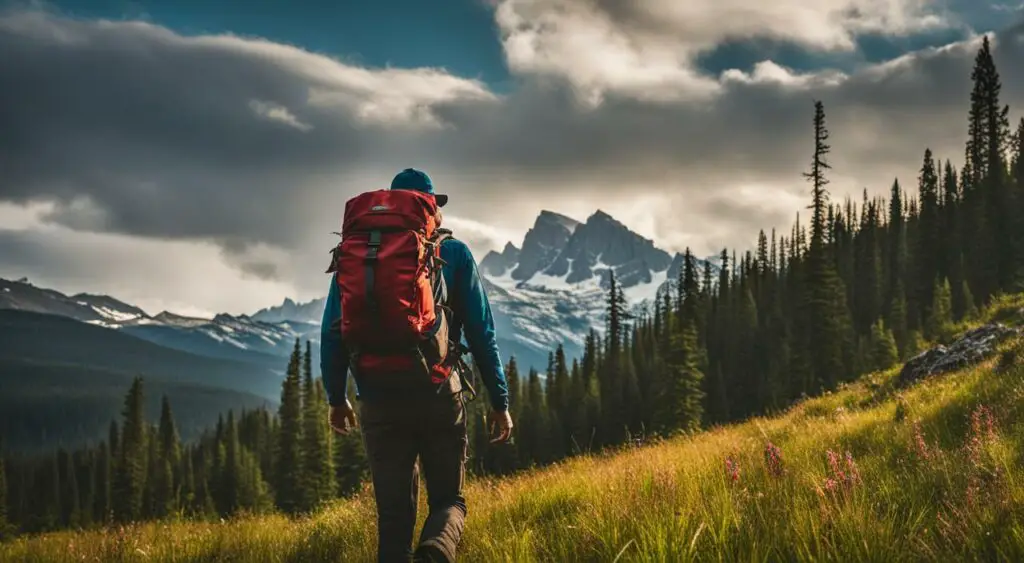
Planning a backpacking trip to Montana can be a thrilling adventure, but it requires careful preparation and organization.
To make the most of your trip, consider the following tips for trip planning, trip logistics, and gear recommendations.
Trip Planning
When planning a backpacking trip in Montana, the first step is to decide which park or area you want to explore.
Montana has many national and state parks with fantastic hiking trails and breathtaking views.
Glacier National Park is one of the most popular parks for backpackers and hikers. It offers over 700 miles of trails, ranging from easy strolls to challenging hikes.
The park requires a backcountry camping permit for overnight stays, which can be reserved in advance on the park’s website.
If you prefer a less crowded park, consider backpacking in the Absaroka Beartooth Wilderness or the Crazy Mountains.
These areas offer rugged scenery and pristine wilderness, but they require more advanced hiking skills and navigation.
Trip Logistics
Before embarking on your backpacking trip, be sure to obtain all necessary permits and familiarize yourself with the park or wilderness area’s rules and regulations.
Make a detailed itinerary and share it with a trusted person, in case of emergency.
If you’re new to backpacking or unsure about navigating on your own, consider booking a guided hiking tour. Many companies offer guided trips that include gear rental, meals, and expert guidance.
Gear Recommendations
Having the right gear is essential for a comfortable and safe backpacking trip. Here are some gear recommendations for backpacking in Montana:
| Essential Items | Clothing and Footwear | Camping Gear | Navigation Tools |
|---|---|---|---|
| Backpack | Waterproof Jacket | Tent | Map and Compass |
| Sleeping Bag | Sturdy Hiking Boots | Sleeping Pad | GPS Device |
| Water Filter or Purification Tablets | Warm Layers for Cold Nights | Cooking Utensils and Stove | Headlamp or Flashlight |
With these trip planning tips, logistics recommendations, and gear recommendations, you can now plan your perfect backpacking trip in Montana.
Get ready to explore the untamed beauty of the Big Sky Country, and have an adventure of a lifetime!
Safety Tips for Backpacking in Montana’s Wilderness
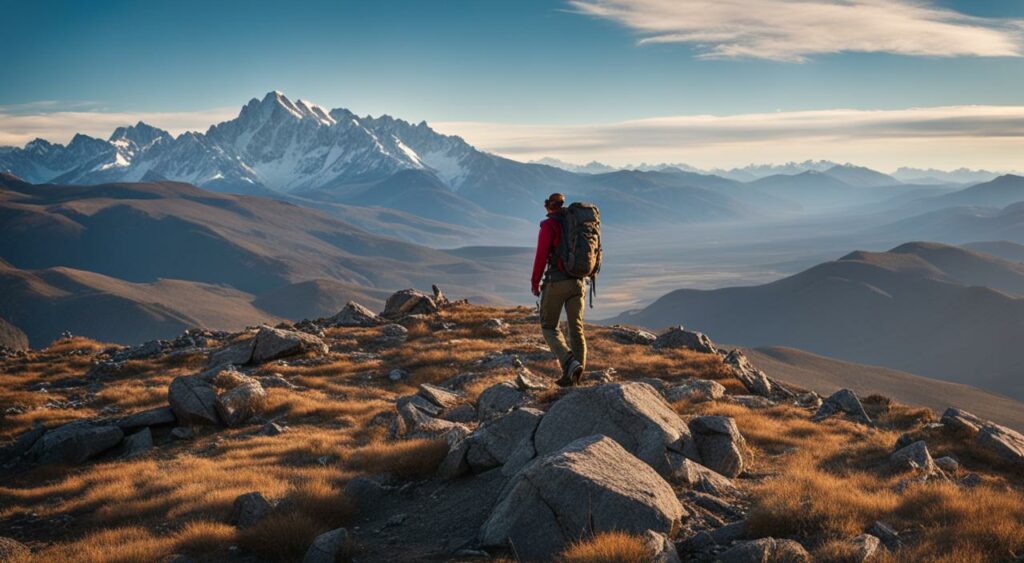
Backpacking in Montana’s wilderness can be an exciting and rewarding adventure, but it’s important to be aware of potential safety hazards and take the necessary precautions.
Here are some safety tips for backpacking trips in Montana’s wilderness:
Travel with a Guide
If you’re new to backpacking or unfamiliar with the area, consider traveling with a guide. A knowledgeable guide can help navigate the trails, identify potential hazards, and provide valuable insights into the local wildlife and terrain.
Research the Area
Before embarking on a backpacking trip, research the area and familiarize yourself with the terrain, wildlife, and weather conditions.
Check the weather forecast and be prepared for changes in weather, especially in mountainous regions.
Stay on Designated Trails
When backpacking in Montana’s wilderness, stay on designated trails to avoid getting lost or encountering dangerous terrain.
Avoid cutting switchbacks and be mindful of steep drop-offs or uneven terrain.
Carry Bear Spray
Montana is home to a large population of grizzly bears, and encounters can be dangerous. Carry bear spray and know how to use it in case of an encounter.
Make noise while hiking to alert bears of your presence, and keep a safe distance if you do encounter wildlife.
Bring Appropriate Gear
Make sure to bring appropriate gear for your backpacking trip, including a first aid kit, navigation tools, and sufficient food and water. Dress in layers and wear sturdy footwear with good traction.
Leave No Trace
When backpacking in Montana’s wilderness, practice Leave No Trace principles to minimize your impact on the environment.
Pack out all trash, avoid disturbing wildlife, and camp only in designated areas. By following these safety tips, backpacking in Montana’s wilderness can be a safe and enjoyable adventure.
However, it’s important to be well-prepared and informed before embarking on any backpacking trip in Montana’s wilderness.
Exploring Montana’s Backcountry Camping Options
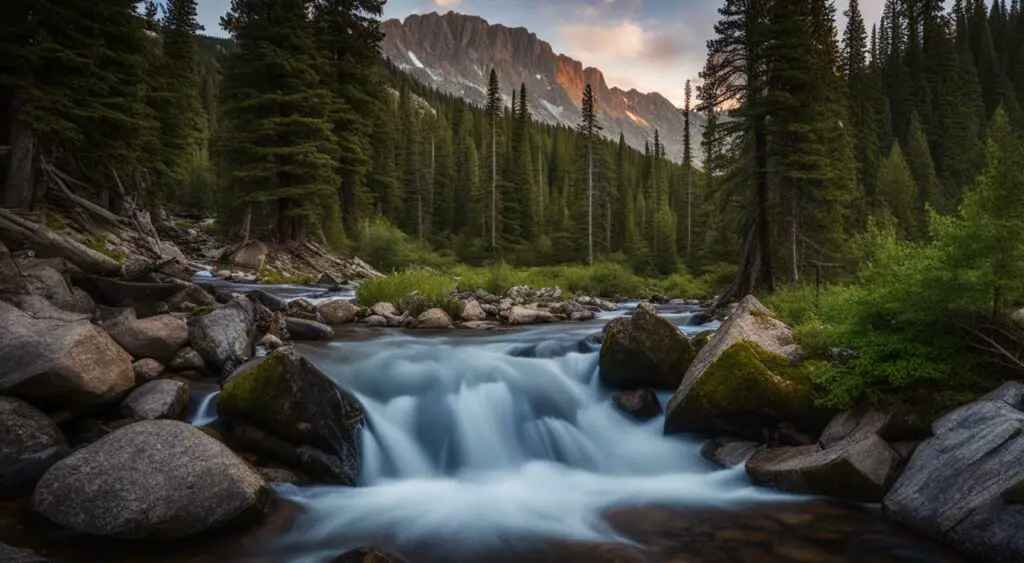
Montana is home to numerous backcountry camping options that offer a unique and immersive way to experience the state’s natural beauty.
Whether you’re looking for a remote and secluded camping spot or a rustic campsite with basic amenities, Montana has something to offer.
Regulations and Permits
Before embarking on a backcountry camping trip in Montana, it’s important to familiarize yourself with the regulations and permits required.
In general, overnight camping is permitted in designated backcountry areas, and campers are required to obtain a permit from the relevant authority.
Depending on the location, permits may be limited and issued on a first-come, first-served basis, so it’s important to plan ahead.
Recommended Campsites
| Campsite Name | Location | Features |
|---|---|---|
| Moose Lake | Lolo National Forest | Scenic views, fishing opportunities |
| Pitamakan/Dawson Loop | Glacier National Park | Alpine scenery, wildlife spotting opportunities |
| Red Rock Lakes National Wildlife Refuge | Southwestern Montana | Birdwatching, fishing opportunities |
These are just a few examples of the many backcountry campsites available in Montana. Each campsite offers something special.
From scenic views and wildlife spotting opportunities to fishing and birdwatching. Be sure to research the options and choose a campsite that meets your needs and interests.
The Unique Experience of Backcountry Camping
Backcountry camping in Montana offers a unique experience that allows you to truly immerse yourself in nature.
Unlike traditional campsites with amenities like running water and electricity, backcountry campsites require campers to be self-sufficient and prepared.
This means packing in all necessary supplies and carrying out all trash and waste.
Despite the challenges, backcountry camping offers a sense of solitude and tranquility that can’t be found in traditional campsites.
It’s an opportunity to disconnect from technology and embrace the natural world, creating memories that will last a lifetime.
Gear Recommendations for Backpacking in Montana
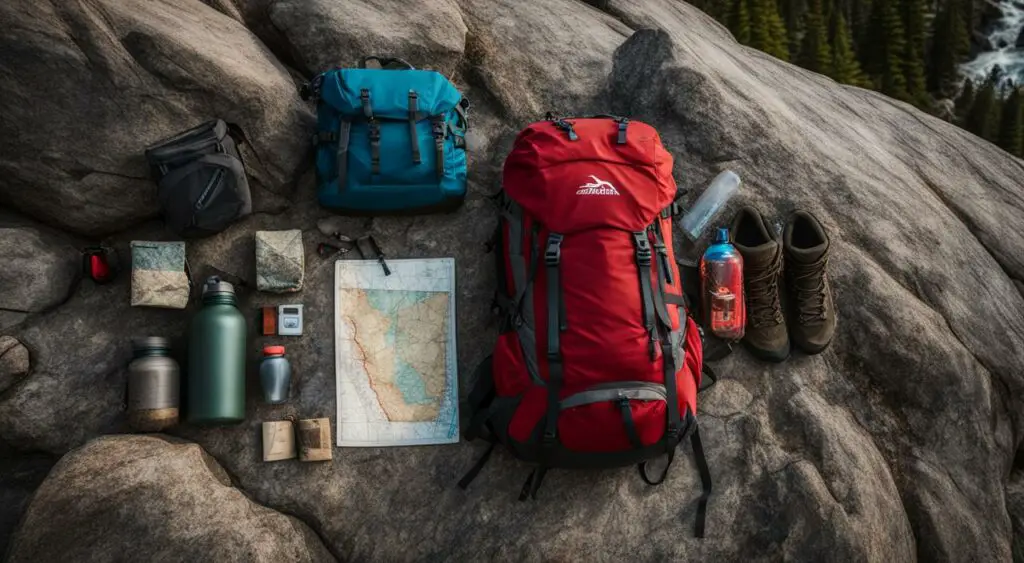
Backpacking in Montana offers unparalleled opportunities to explore the great outdoors, but having the right gear is essential to ensure a comfortable and safe experience.
Here are some backpacking gear recommendations specifically tailored to Montana’s rugged terrain and unpredictable weather:
Backpacking Essentials
- Backpack: Look for a backpack with a capacity of at least 50 liters for multi-day trips. Consider the fit, ventilation, and weight distribution when choosing.
- Tent: A lightweight and durable tent is a must-have for backcountry camping in Montana. Choose a tent that offers adequate protection from rain, wind, and bugs.
- Sleeping bag: Select a sleeping bag with a temperature rating appropriate for the season and location. Look for a lightweight and compressible option for easy packing.
- Sleeping pad: A sleeping pad provides cushioning and insulation from the cold ground. Look for a pad that is lightweight, durable, and comfortable.
- Water filter: Clean drinking water is essential in the backcountry. A water filter or purifier ensures safe drinking water from streams or lakes.
- Headlamp: A headlamp with extra batteries is essential for navigating trails at night or in low-light conditions.
- Map and compass: Always carry a map and compass and know how to use them to navigate the wilderness.
Clothing and Footwear
- Layered clothing: Montana’s weather can be unpredictable with sudden temperature changes. Layered clothing provides flexibility and warmth when needed.
- Hiking boots: Select sturdy, waterproof hiking boots with good traction for rugged terrain.
- Socks: Choose moisture-wicking and breathable socks to keep feet dry and comfortable.
- Hat and gloves: Pack a warm hat and gloves for cold weather and high altitudes.
- Sun protection: Montana’s high elevation and sunny weather can lead to sunburn and dehydration. Wear sunscreen, sunglasses, and a wide-brimmed hat for protection.
Camping Gear
- Camp stove and fuel: A lightweight camp stove and fuel are necessary for cooking meals and boiling water.
- Cooking utensils: Pack a lightweight pot, spork, and cup for cooking and eating.
- Bear canister: Montana’s wilderness is home to grizzly bears and other wildlife. A bear canister is required in some areas to store food and prevent bear encounters.
- Trekking poles: Trekking poles provide balance and reduce strain on knees during steep ascents and descents.
- Emergency kit: Pack a basic first aid kit, whistle, fire starter, and emergency shelter.
Remember to pack light and only bring what is necessary for the trip.
Avoid cotton clothing as it does not dry quickly and can lead to hypothermia. Opt for lightweight and quick-drying materials for clothing and gear.
Always check the weather forecast and trail conditions before embarking on a backpacking trip and adjust gear accordingly.

Conclusion
Montana is truly a backpacker’s paradise, offering some of the best hiking and camping experiences in the United States.
Whether you’re an experienced backpacker or just starting out, there’s a trail for everyone in Montana.
From the rugged wilderness of Absaroka Beartooth to the stunning landscapes of Glacier National Park, there’s no shortage of incredible backcountry adventures waiting to be discovered.
If you’re planning a trip to Montana, this backpacking guide provides all the information you need to ensure a successful and enjoyable adventure.
With its diverse backpacking trails, unique camping options, and spectacular scenery, Montana is the ultimate destination for travelers seeking to explore the beauty of the great outdoor.
So pack your backpack, lace up your hiking boots, and get ready to discover the best backpacking destinations in Montana.
Whether you’re looking to explore the backcountry on your own or prefer the guidance of expert wilderness guides, Montana has something for everyone.
So why wait? Start planning your Montana backcountry adventure today and experience the thrill of backpacking in one of the most beautiful states in the country.

FAQ
-
What are some popular backpacking trails in Montana?
Some popular backpacking trails in Montana include the Continental Divide Trail, Bob Marshall Wilderness Complex, and the Beartooth Loop Trail.
-
What makes Glacier National Park a backpacker’s paradise?
Glacier National Park offers stunning landscapes, challenging trails, and abundant wildlife. It is a paradise for backpackers seeking adventure and natural beauty.
-
What is the Absaroka Beartooth Wilderness known for?
The Absaroka Beartooth Wilderness is known for its rugged beauty and pristine wilderness. It offers backpackers a chance to experience untouched landscapes and solitude.
-
What can I expect when backpacking in the Crazy Mountains?
The Crazy Mountains offer breathtaking alpine scenery and challenging hiking opportunities. Backpackers can experience a hidden paradise with stunning mountain views.
-
How do I plan a backpacking trip to Montana?
When planning a backpacking trip to Montana, consider obtaining permits, researching trails, and gathering the necessary gear. Guided tours and trip planning resources can also be helpful.
-
What are some safety tips for backpacking in Montana’s wilderness?
It is important to be prepared for wildlife encounters, navigate effectively, and stay aware of weather conditions. Emergency preparedness is also crucial for a safe backpacking trip.
-
Can I go backcountry camping in Montana?
Yes, backcountry camping is allowed in many areas of Montana. Be sure to familiarize yourself with regulations, obtain permits if required, and choose recommended campsites.
-
What gear do I need for backpacking in Montana?
Essential gear for backpacking in Montana includes a backpack, sturdy footwear, appropriate clothing, camping gear, and navigation tools. Be prepared for changing weather conditions.

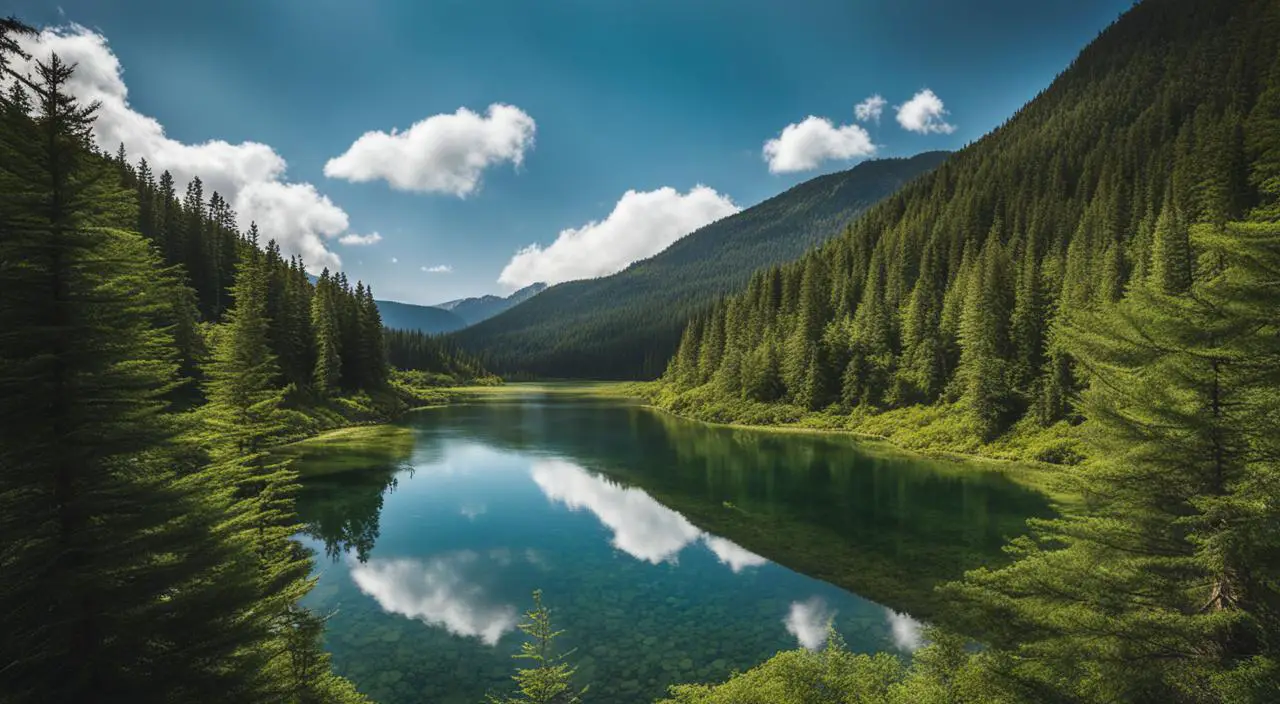

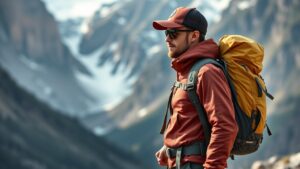
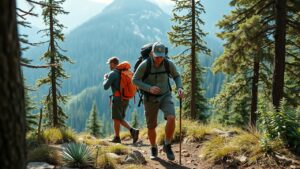
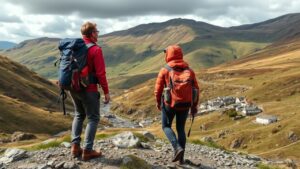
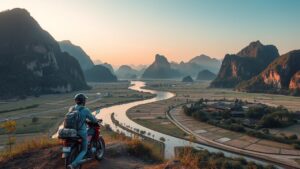
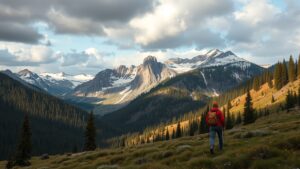

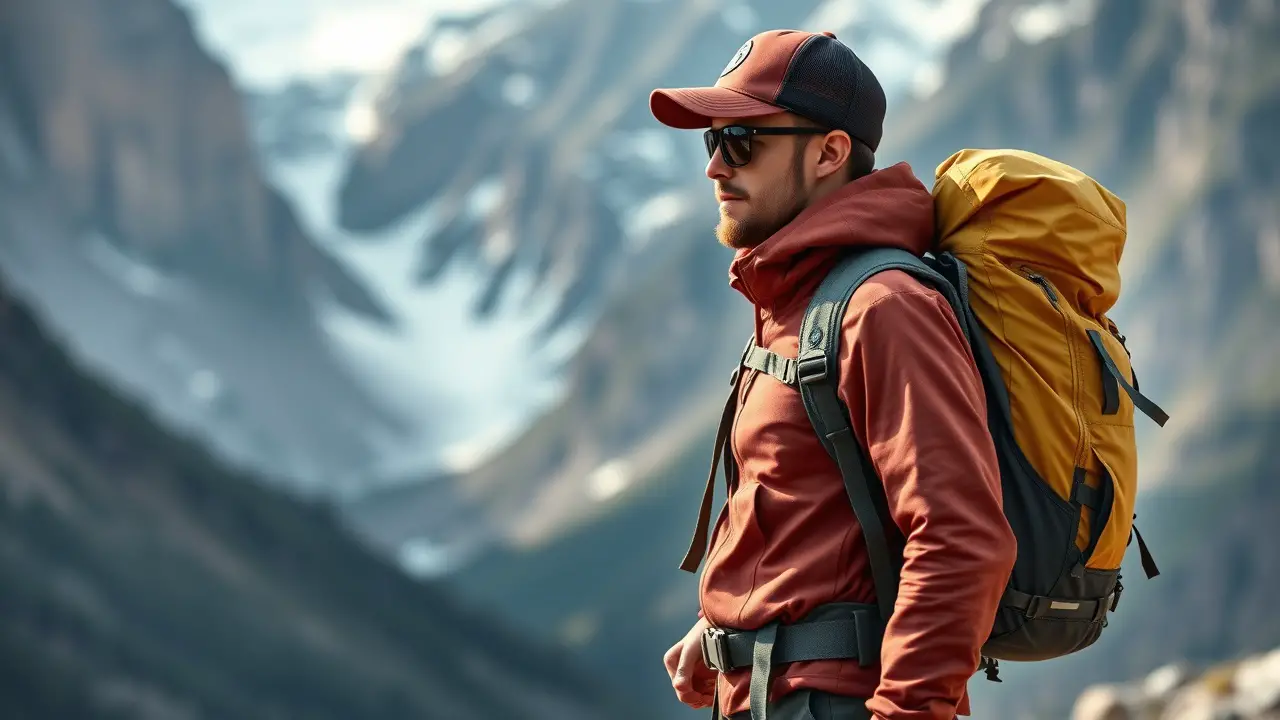
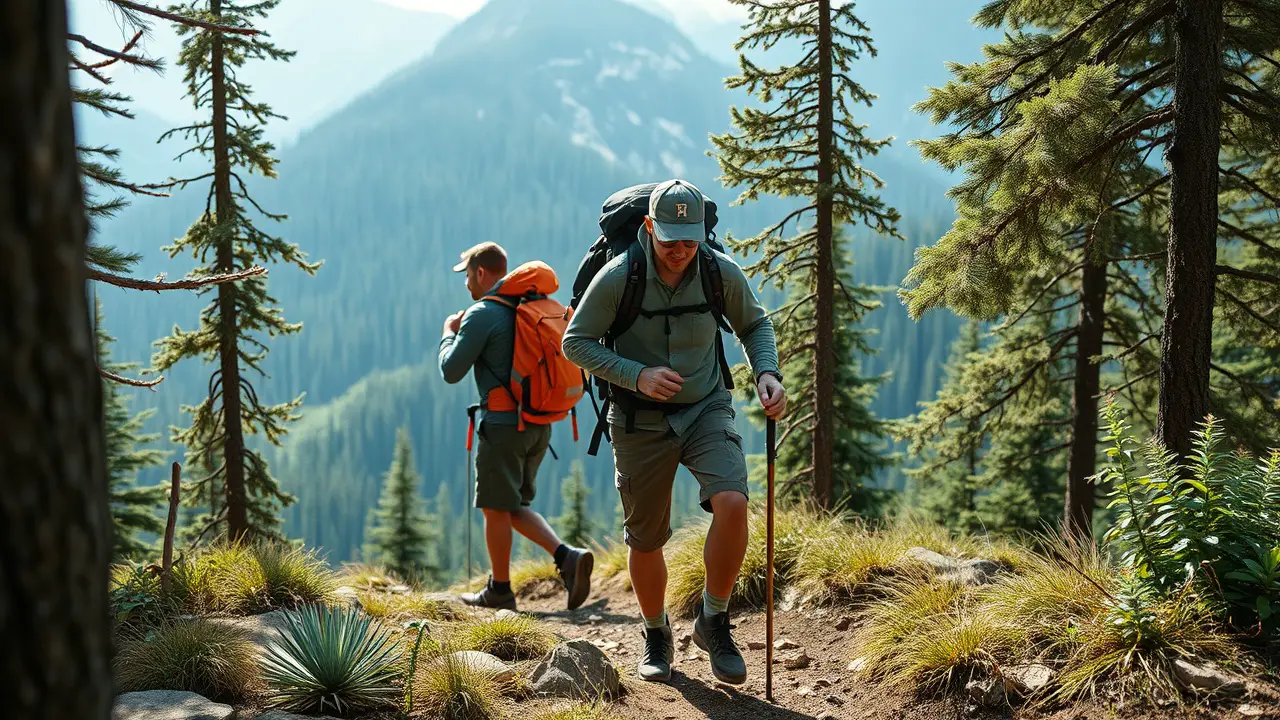
Leave a Reply